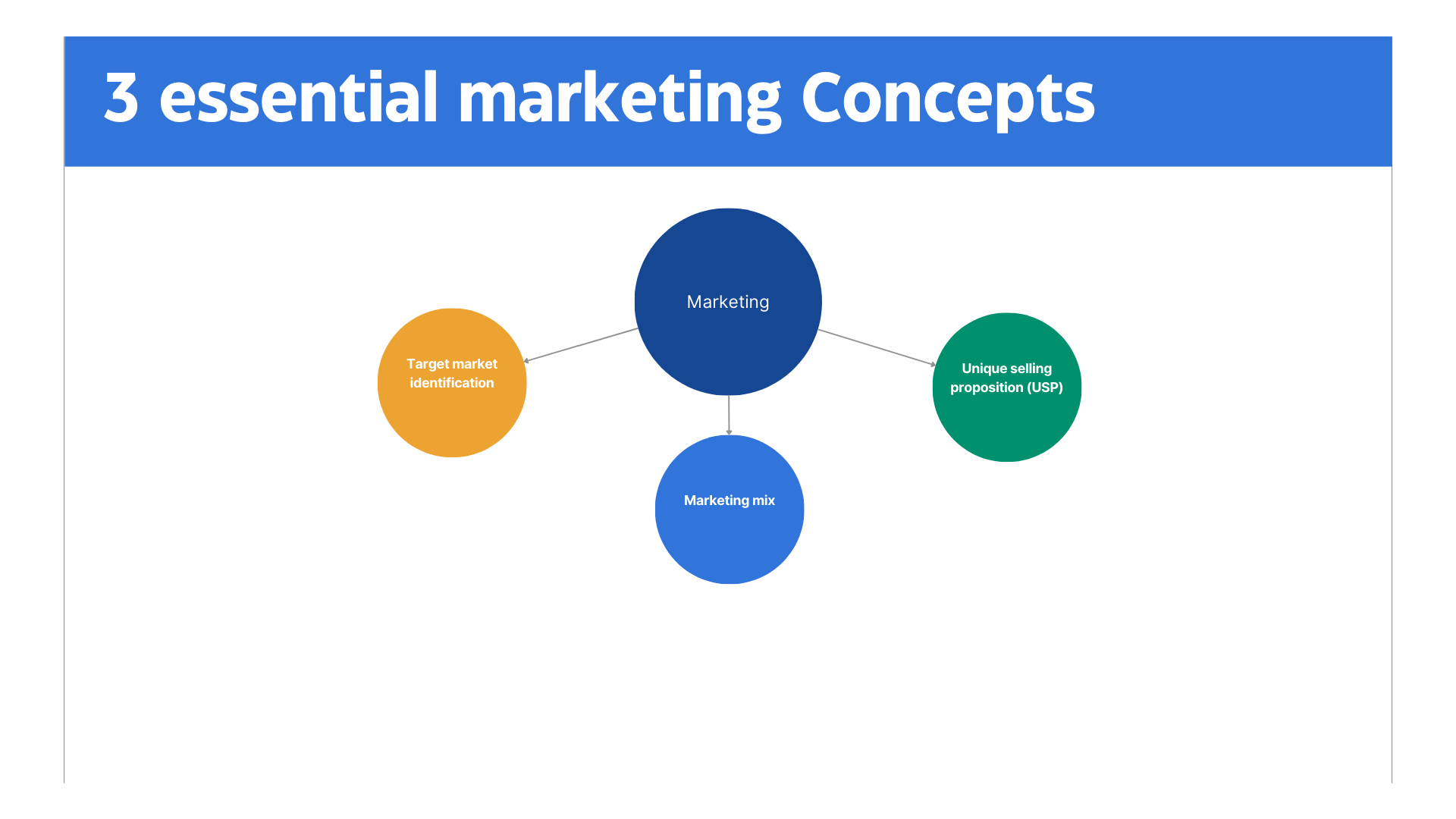From Strategy to Success: How to Apply
From Strategy to Success: How to Apply 3 Essential Marketing Concepts to Your Business
Marketing is an essential component of any successful business, but it can be a complex and overwhelming field to navigate. With so many different strategies and concepts to consider, it can be difficult to know where to focus your efforts. That’s why it’s important to start with the basics and build from there. In this article, we’ll explore three essential marketing concepts that can help take your business from strategy to success. Whether you’re just starting out or looking to refine your existing marketing approach, these concepts will provide a solid foundation for your efforts. From understanding your target audience to crafting a compelling brand message, we’ll guide you through each step of the process. So let’s dive in and discover how to apply these essential marketing concepts to your business.
Understanding the 3 essential marketing concepts
Before we dive into how to apply these concepts to your business, let’s take a brief look at what they are and why they matter.

Concept 1: Target market identification
The first essential marketing concept is understanding your target market. This means identifying the specific group of people or businesses that your product or service is aimed at. By understanding your target market, you can tailor your marketing efforts to reach the people who are most likely to be interested in what you have to offer.
Concept 2: Unique selling proposition (USP)
Your unique selling proposition (USP) is what sets your product or service apart from the competition. It’s the thing that makes you stand out and gives people a reason to choose you over someone else. Your USP could be anything from your pricing model to your customer service to the quality of your product. Whatever it is, it needs to be something that resonates with your target market and sets you apart from the competition.
Concept 3: Marketing mix
The marketing mix is the combination of tactics and strategies that you use to promote your product or service. This includes everything from advertising and promotions to public relations and direct marketing. By understanding the different elements of the marketing mix and how they work together, you can create a comprehensive marketing strategy that reaches your target market and promotes your USP.
Applying the concepts to your business
Now that we understand the three essential marketing concepts, let’s take a look at how to apply them to your business.
Crafting a marketing strategy
The first step in applying these concepts to your business is to craft a marketing strategy. This means taking the time to identify your target market, understand your USP, and develop a comprehensive marketing mix that will reach your target market and promote your USP.
To begin, start by identifying your target market. This could be a particular demographic, geographic region, or industry. The key is to be as specific as possible so that you can tailor your marketing efforts to reach the people who are most likely to be interested in what you have to offer.
Once you’ve identified your target market, it’s time to focus on your USP. What sets your product or service apart from the competition? What makes you unique? This could be anything from your pricing model to your customer service to the quality of your product. Whatever it is, make sure it’s something that resonates with your target market and sets you apart from the competition.
Finally, it’s time to develop your marketing mix. This includes everything from advertising and promotions to public relations and direct marketing. By understanding the different elements of the marketing mix and how they work together, you can create a comprehensive marketing strategy that reaches your target market and promotes your USP.
Measuring and analyzing success
Once you’ve developed your marketing strategy, measuring and analyzing its success is important. This means tracking key metrics like website traffic, social media engagement, and sales. By regularly measuring and analyzing these metrics, you can identify areas of your marketing strategy that are working well and areas that need improvement.
To get started, set up a system for tracking your key metrics. This could be as simple as a spreadsheet or as complex as a dedicated analytics platform. Whatever system you choose, ensure it provides the information you need to make informed decisions about your marketing strategy.
Once you’ve started tracking your key metrics, it’s time to analyze the data. Look for trends and patterns in your data that can help you identify areas of your marketing strategy that are working well and areas that need improvement. Use this information to make data-driven decisions about refining and improving your marketing strategy over time.
Common mistakes to avoid
As you work to apply these essential marketing concepts to your business, there are a few common mistakes that you’ll want to avoid. These include:
- Not understanding your target market: If you don’t understand your target market, you’ll struggle to create a marketing strategy that reaches them effectively.
- Focusing too much on your product or service: While it’s essential to have a great product or service, it’s equally important to focus on your marketing strategy and how you’re promoting it.
- Neglecting to measure and analyze data: If you’re not measuring and analyzing your key metrics, you’ll struggle to identify areas of your marketing strategy that need improvement.
By avoiding these common mistakes, you’ll be well on your way to creating a successful marketing strategy that drives growth and revenue for your business.
Conclusion
Marketing is essential to any successful business, and it’s important to have a comprehensive understanding of the key concepts. With the right approach, you can create a marketing strategy that reaches your target market and promotes your USP. Regularly measure and analyze success metrics to ensure you’re always making data-driven decisions about refining and improving your marketing strategy over time. Avoid common mistakes like not understanding your target market or neglecting to measure data, and you’ll be well on your way to achieving success with your marketing efforts. But it can be a complex and overwhelming field to navigate. By starting with the basics and building from there, you can create a solid foundation for your marketing strategy that drives growth and revenue for your business. By understanding your target market, developing a compelling USP, and creating a comprehensive marketing mix, you can make a marketing strategy that reaches your target market and promotes your unique value proposition. And by measuring and analyzing your key metrics, you can refine and improve your marketing strategy over time, driving even greater success for your business.
